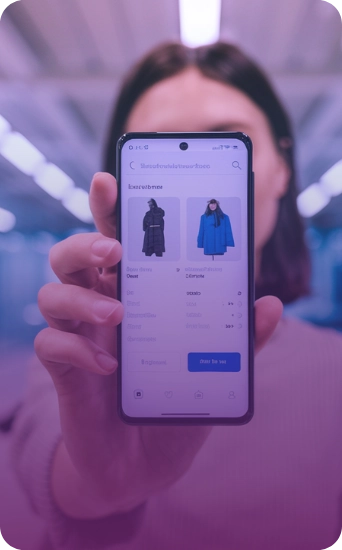In 2024, e-commerce platforms were significantly impacted by technological innovations, given the new behavior of Brazilian consumers who are looking for even more personalized shopping experiences. Not surprisingly, tools such as Artificial Intelligence (AI) and machine learning (ML) have been adopted in order to provide an ultra-personalized service, in favour of highly customized and individualized experiences for each customer.

With exclusive offers and interactive communications, these technologies use personalized recommendations in real time that adjust instantly based on the specific behavior and preferences of each consumer, resulting in increased consumer satisfaction and loyalty. target audience.
And what can we expect from e-commerce in 2025? Overall, the outlook is promising, especially given the adoption of technologies and strategies that will continue to redefine the virtual shopping experience. According to a survey by Mobmio, the profits of affiliates focused on mobile traffic in the country grew by approximately 15% in the first half of 2024 alone, which demonstrates the increasing growth of m-commerce on the national scene and, consequently, greater consolidation of the sector in the country.
This has everything to do with the inclusion of the concept Unified Commerce. Emerging as a key trend for 2025, precisely because it offers a holistic view of the customer, it provides a more cohesive, personalized and frictionless shopping experience. The strategy is seen by entrepreneurs as a watershed between business success and failure, as it eliminates the barriers between online and offline.
According to an NRF study, companies that adopt unified commerce strategies show an average increase of 30% in their revenue. Thus, capable of unlocking the future of retail, the Unified Commerce is indispensable in the segment, as it meets the expectations of modern consumers, brings operational efficiency and, above all, sustainable growth.
This concept also reminds us of Commerce Everywhere, which favors a continuous and interconnected ecosystem. Redefining the traditional e-commerce model, the approach goes hand in hand with Social Commerce, a powerful trend because it is directly linked to the consumer on social networks. With integrated shopping functionalities that facilitate instant transactions and boost customer engagement, social media platforms reflect a growing disruption in e-commerce channels.
In fact, NIQ's "Mid-Year Consumer Outlook: Guide to 2025" report points out that three out of 10 people are likely to buy on social media next year, while 29% are willing to switch brands if an influencer makes a recommendation on social media.
Going beyond the moment of purchase, technologies such as blockchain, for product tracking, and IoT, for inventory management, also promise to transform operations. At the same time, the integration of AI will continue to revolutionize the sector through more personalized recommendations, automated service and logistical efficiency, as well as fluid, convenient shopping experiences connected to digital everyday life.
Therefore, organizations that manage to leverage technological innovations and adapt quickly to new consumer expectations and needs will be better placed to thrive in this dynamic environment. It's worth developing specific marketing strategies for social networks, investing in expanding digital payment options in order to attract a younger and more technologically engaged audience, investing in augmented reality (AR), virtual reality (VR) and sustainable practices such as ecological packaging and optimized routes, which, although they may seem distant, are important to these consumers.










